Old Mine & Old European Cut Diamonds
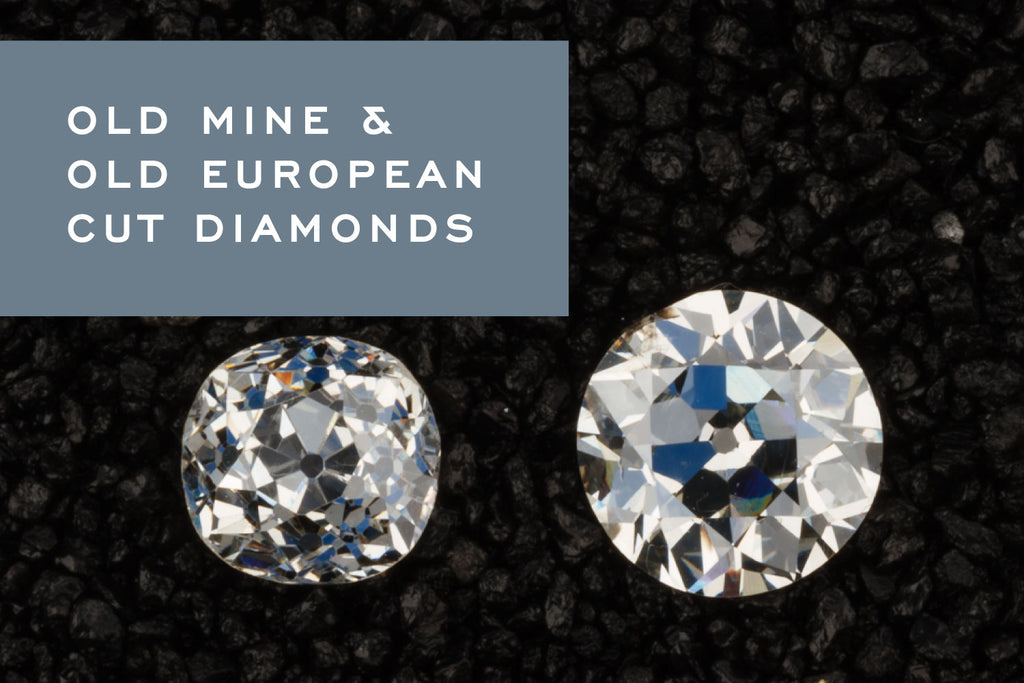
A Look at Their Origins, Characteristics, & Undeniable Charm
Holding a piece of jewelry that contains an antique diamond feels like you’re handling ancient treasure. And for good reason! While modern diamonds are mined and cut by the millions each year, a limited number of old mine and old European cut diamonds exist in the market today.
These precursors to our modern-day round brilliant cuts offer a distinct visual experience in terms of how their hand-cut facets play with light. Their facets are wider and more geometric, resulting in pops of sparkle instead of the disco ball dazzle we see in diamond cuts today. They’re perfectly imperfect, which is part of their charm.
Old mine and old European cut diamonds are the most common of the antique diamond cuts. This article takes a deep dive into both to reveal their origins and point out their distinctive visual characteristics. After reading through, you should be able to spot the differences on your own!

Old Mine Cut (Left) Old European Cut (Center) and Modern Round Brilliant Diamond (Right)
Diamonds from the Old Mines
Antique old mine and old European cut diamonds are commonly found in jewelry from the Georgian, Victorian, Edwardian, and Art Deco Eras, spanning from the 1700s through the late 1800s. Diamonds from this time were cut by hand because the bruting machines we use today weren’t invented until the 1900s.
The diamond rough for these gems originated in the literal “old mines” of Brazil and India. The African mines that supply the whitest rough were not yet discovered. So, these diamonds tended to be of lower color and were more limited in number than what we see today.
Diamond cutters of this time were inventive. They assessed every diamond individually, making cuts to bring out the best color and sparkle for each stone. The diamonds were meant to dazzle under low-light conditions such as candles and gas lamps. Cutting by hand and eye-balling the cuts meant that no two diamonds would ever be the same.
Old mine cut and old European cut diamonds came from the same humble origins and reigned in overlapping eras, but they have distinct visual differences. Let’s dive deeper into how you can distinguish between the two.

Old Mine Cut Diamonds
Old Mine Cut
Old mine cut diamonds were most commonly used during the Georgian and Victorian eras from the 1700 to 1800s.
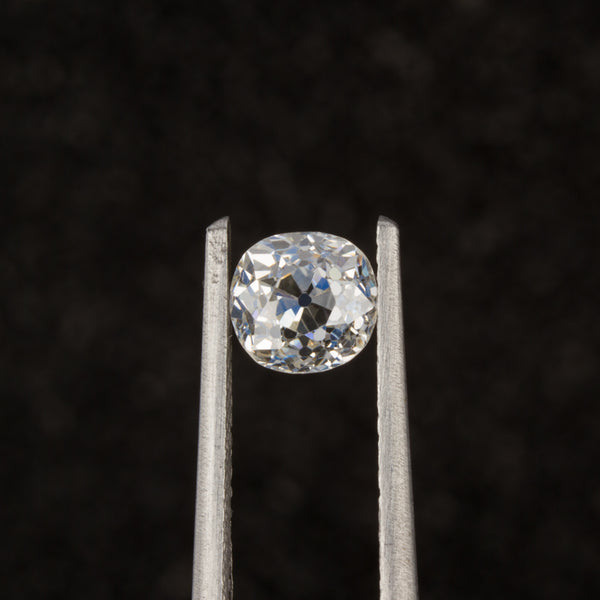

The best indicators of an old mine cut diamond are the open culet (the round facet on the very bottom of the stone) and the squared-off “cushion” shape. Diamond cutters of the day would follow the gem’s natural octahedral shape as a guide. The girdle (the widest part of the diamond held in the tweezers above) was often the unpolished edge of the natural diamond crystal.
The table (the very top facet) on old mine cuts tends to be very small. They also feature a high crown and a deep pavilion (above and below the girdle). Like our modern round brilliants, the old mine cut has 58 facets, but they are chunkier and more geometric facets than we see today.

Old European Cut Diamonds
Old European Cut
Advances in diamond-cutting technology led to the development of the old European cut diamond in the late 1800s. Diamond shapes became rounder, tables got larger, and the 58 facets became more elongated.
These new cuts were extremely popular during the Victorian, Edwardian, and Art Deco eras and were a precursor to our modern brilliant diamonds.
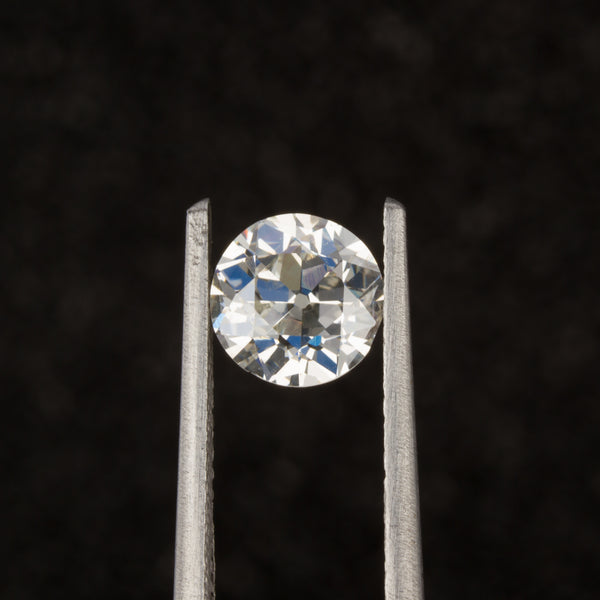

Old European Cut Side View
You can see that the culet is still present in old European cuts, but it’s often smaller than that of its predecessor. Old European cuts tend to have a rounder shape than old mine cuts; however, they are still imperfect circles because they were cut by eye, not machine.
Choosing an Old Mine or Old European Cut Diamond
The hand-cut nature of antique diamonds is what gives them a palpable charm and beauty. It’s also what makes them near impossible to grade under our modern standards. In my opinion, antique gems are best observed and appreciated individually because they’re full of character.
CUT CONSIDERATIONS
The beauty standards we judge modern diamonds against were not defined for gem cutters of the old mine and old European eras. Today’s diamond cutting technology allows for repeatable processes and standardized angles to capture the stone’s maximum brilliance. As a result, modern diamond grading reports have a hard time evaluating antique cuts. They might receive “poor” cutting grades by today’s standards, but they carry history and hand-crafted charm that is immensely beautiful.
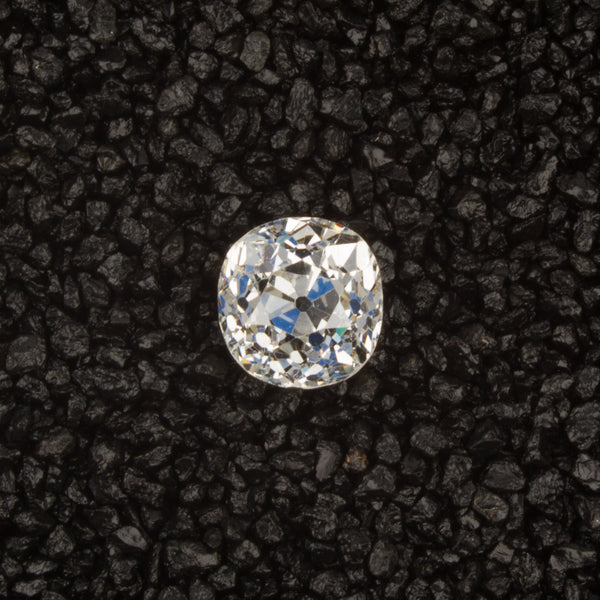
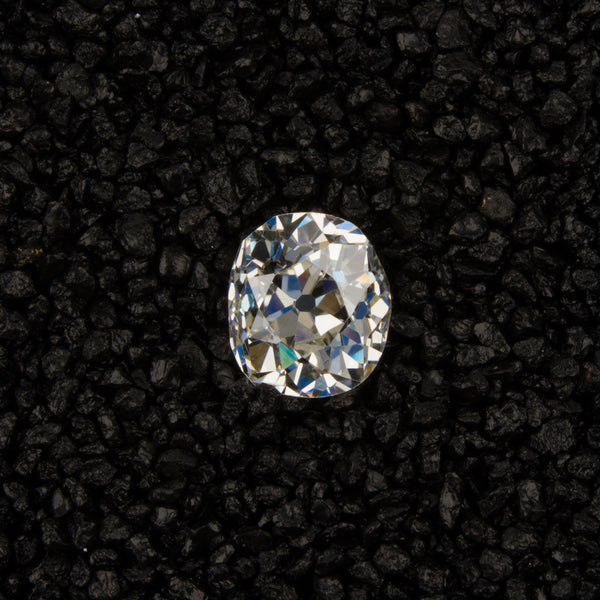
Old Mine Cut Diamonds
COLOR CONSIDERATIONS
The color quality of antique diamonds is equally difficult to judge against our present-day standards. Many of them receive a “J,” “K,” “L,” or “M” on our current “D” (colorless) to “Z” (light yellow) grading system. However, they were some of the best on the market in their day because the mines where we currently get our whitest diamond rough weren’t yet discovered. Keep in mind that the old mine and old European diamond cutters would cut each diamond to enhance its individual color. So, while they may receive a lower letter grade, they “face up” whiter to the naked eye.

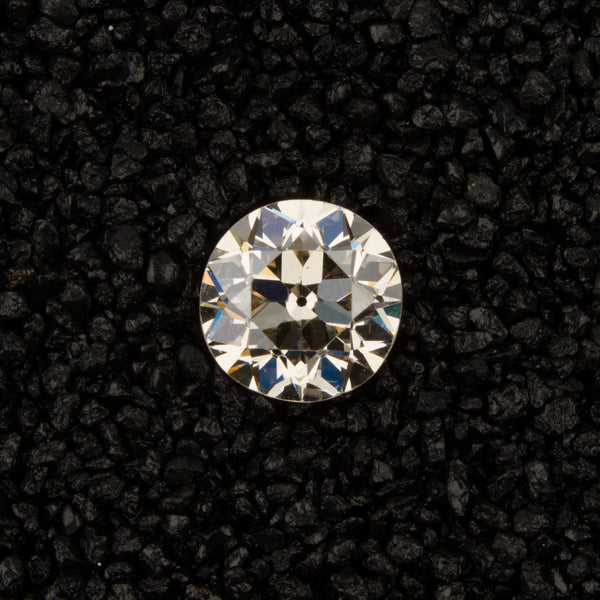
Old European Cut Diamonds
LIGHTING CONSIDERATIONS
Lighting conditions greatly affect the look of an antique diamond. Since these cuts were meant to dazzle in low-light settings, they can have a pretty interesting sparkle throughout the day. Before you make your purchase, I encourage you to view them in as many lighting conditions as possible — daylight, fluorescent, incandescent, or even candlelight.
It’s fascinating to learn about the origins of antique gemstones and the ways in which they differ from the modern round brilliant. I invite you to visit the links below or reach out to me here if you have more questions about antique diamonds.
At the end of the day, the right diamond for you is the one that gives you a visceral reaction.
.
 Curious about about Rose Cut Diamonds? Read my article here.
Curious about about Rose Cut Diamonds? Read my article here.
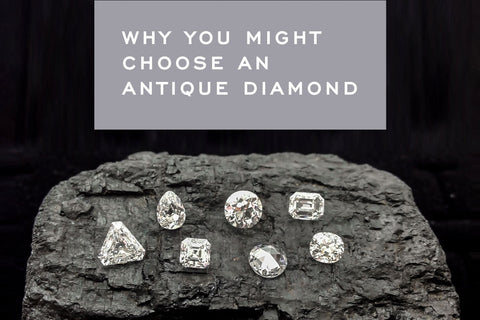 Still on the fence about old mine and old European cuts? Discover more reasons to choose an antique diamond in my interview with the antique diamond specialists at Perpetuum Jewels.
Still on the fence about old mine and old European cuts? Discover more reasons to choose an antique diamond in my interview with the antique diamond specialists at Perpetuum Jewels.





